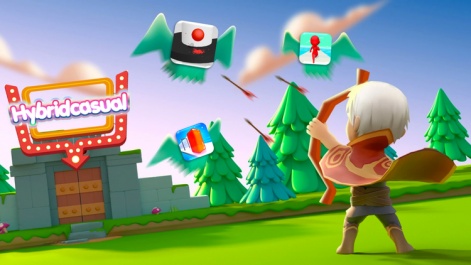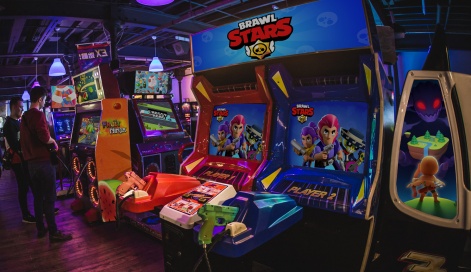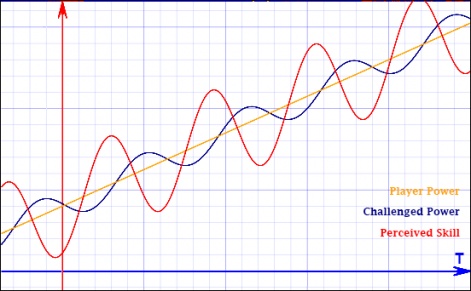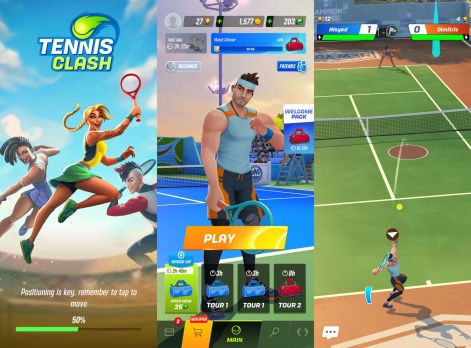Guest post written by Niek Tuerlings, senior game designer at Voodoo.io
About a year after the term ‘HybridCasual’ was first coined, an ever-increasing number of professionals in the mobile games industry are acknowledging its existence.
Even so much that it might seem to start sounding a wee bit empty and hollow, like a buzzword at best. On one side this is logical since it’s a rather elusive term with a specific history behind it, as has been aptly deliberated by Will Freeman last July. On the other side, it’s not entirely helpful, as the term will only become increasingly fluffy and meaningless this way.
Since we are currently exploring this direction at Voodoo as well, and as a fervent rectifier of things ranging from grammar to whether Mountain Goats are actually goats (no they aren’t, and yes, I’m fun at parties) I’ll try to shed some light on games that seem to fit the definition very well and why this is the case.

Since Archero’s industry-breaking launch in May last year, a lot has changed (although the image below might make you believe otherwise). Next to tens if not hundreds of Archero-likes flooded the market, trying to improve on- or in some cases simply replicate at least part of its success. But there has definitely been a visible shift in mentality for an increasing number of mobile game developers. It has likely seemed like a boat they shouldn’t miss.

But what if you want to make a HybridCasual game but don’t want to make another Archero? Which considerations are important and what would making a game that fits in that segment really involve?
Simply put, the idea is to make a game using one core interaction that is simple enough to be able to apply to the HyperCasual market when advertised, while providing an as deep as possible metagame to engage players for that sweet sweet long-term retention. Take into account that “deep” doesn’t exclude “meaningful” and “comprehensible” to the target audience.
A year after he coined the term, consulting Naavik’s and Master the Meta’s Abhimanyu Kumar on his findings, Arcade turns out to be one of the most obvious generalisations of core games that make sense for HybridCasual titles. While this article looks at HybridCasual mostly from a design perspective, definitely stay on the lookout for Manyu's upcoming piece that breaks down HybridCasual as a more structural and holistic definition.

It makes a lot of sense; Games with an Arcade core game fit the HybridCasual mould so well because they share a lot of the same characteristics with their coin-operated counterparts. They:
- Are instantly understandable, keeping their CPI low
- Have transparent controls, to stay accessible for the masses
- Require no deep strategic knowledge (even far into the end-game), for the same reason
- Are reflex-driven, for that feeling of motorical mastery
- Feature round-based gameplay, for that feeling of “just one more time” and “this time will be different”
Given the nature of Arcade games, their biggest driver of engagement is motorical challenge. To keep this challenge interesting in the long run, the easiest way is increasing the numbers involved.

Because motoric skill is at play, players are going to attribute a big part of their progress to their personal performance and will think less about their steadily increasing strength. By alternating the power to progress alongside the player’s strength, their perceived skill can be influenced. Safe to say, in games with enough agency, a player’s actual skill and ability to focus help surmount the posed challenges quicker. In this case, truly great games feed this feat of extraordinary performance back to the player.
On top of this, modern-day mobile games obviously are able to do something their bulky predecessors couldn’t: make use of continuous progression. Where arcade machines were shared amongst thousands of players and therefore had to have their progress reset after each round, mobile games have a single owner and will simply put their players back where they left off along the above graph’s X-axis. Additionally, the option to implement data-driven, personalised difficulty by modifying the power amplitude on the fly gives current games the potential to be even more engaging.
The motoric challenge requirement disqualifies story-driven games, RNG-dependent games and yes, even puzzle games from being easily adaptable into HybridCasual.
It would be a major surprise and design achievement to somehow make simulation, sandbox or even social casino fit the HybridCasual formula. Some other genres like action puzzle or tower defense might have the potential to feature HybridCasual games, although this would most likely require a change to their core’s DNA to make it fit the above characteristics. Some genres would have to be almost entirely stripped from their tactical thinking and add more reflex-based mechanics instead, while others would simply need their core game’s skill ceiling to be heightened. It could be argued that a successful HybridCasual game doesn’t exclusively need an arcade core, but so far there have been no examples to prove the opposite.
Which games apply?
Restrictions to HybridCasual core games have been covered above, but what shapes their illustrious meta games? You guessed it; simplicity. Qualified games only have a handful of progression layers. The ways to increase the strengths of characters in Mr. Autofire are upgrading their level, their gear, their talents and arguably the ability to fuse equipment together. It’s deep enough to feature a seemingly infinite amount of combinations to play, while staying very easily digestible. There are “wrong” strategic choices to make during gameplay, but these mistakes will never heavily block progress.

Another great example is Mow Zombies, where the player can upgrade their weapons to be able to keep mowing down increasingly large waves of zombies. The game keeps track which level the player is playing, it has a simplified talent system (as is the case with Mr. Autofire, talents are randomly selected to be upgraded) and eventually a super casual base-building mechanic is introduced.

Other refreshing examples of HybridCasual executions include Sky Bandit, Bullet League: Battle Royale, Combat of Hero and Bullet Echo.
It should be mentioned that every title in the above list features core game variations strong enough that each round of gameplay feels entirely different. Without a meaningful implementation of this variation, your title will immediately feel repetitive and stale.
Games that don’t adhere
As a developer, you can choose to monetise and advertise your game any way you want. You don’t have to take this very specific HybridCasual path that’s being laid out by this surge of similar products. Most games definitely still don’t, and clearly not all Arcade titles can be called HybridCasual. Take Supercell’s ‘Brawl Stars’, which would be a great Arcade machine in your local Barcade. This game has so much depth because of its roster of unique characters and their own specific learning curves that it can hardly be called Arcade anymore. The ambition & depth of the game doesn’t line up with the HybridCasual market, which results in its User Acquisition strategy being highly different from HybridCasual games.
Clearly there’s a tiny marketing mismatch between this and your average HybridCasual game.
But what about sports games? Technically, most sports are very Arcade-friendly. What we shouldn’t forget though is that great HybridCasual games need a clear and vertical power progression with diverse itemisation in the metagame and a core game that features enough variation to make every round feel entirely different. Unless you’re adding high amounts of fantasy (think Mario Tennis) to your game, sports games usually can’t carry that responsibility either.

And then there are studios that even take this whole thing a step further. Where all aforementioned games try to snuggle in between HyperCasual and Casual games, Protostar’s It's literally just Mowing takes an UltraCasual approach for its core game while adding a HyperCasual metagame featuring collectible skins. Are you still with me? As its fantastic title illustrates, the game’s core solely caters to the player’s “need to feel good” while providing that extra nudge to come back and ‘complete the game’ by accumulating all skins for the avatar and its trusty lawnmower. Not HybridCasual, but a super cool and different kind of Hybrid that finds its own (even more extreme) spot on the casual scale.

Right in the Feels
Arcade game controls need to be highly optimised and are responsible for the majority of the experience. Developing innovative gameplay with seamless controls can take loads of time and iterations. Production pipelines facilitating this exploration are essential. Just like HyperCasual game iterations are being done on a weekly basis, the feeling of HybridCasual core gameplay needs the same or an even higher level of attention. A story from the trenches is Archero’s control scheme, where the player needs to lift their finger from the screen to make the avatar start shooting was an accidental but pivotal discovery during its development.
Metagame wise, an increasing amount of mobile games featuring similar levels of depth is a clear and recent trend. Mr. Autofire, arguably the most successful game (after Archero) that is truly following this HybridCasual playbook, has earned approximately 5% of Archero’s revenue over the past 6 months. The important thing to mention here is that Lightheart Entertainment calls their flagship title HyperCore, not HybridCasual. This proves what the -let’s face it- in retrospect hyper-misleading HybridCasual term actually has turned out to mean; hyper-accessible games that cater to the relatively ‘hardcore’ Arcade audience. Do not forget that, as demonstrated by Protostar and an increasing amount of casual studios, other hybrids catering to less hardcore audiences are most certainly on the rise as well.
It’s an ambitious endeavour marrying a fresh and sexy Arcade core game to a metagame that’s exactly deep enough, as both are highly interdependent. If you get it right, however, the final product’s elegance can take you a long way. If your marketing strategy makes sense, that is.






















